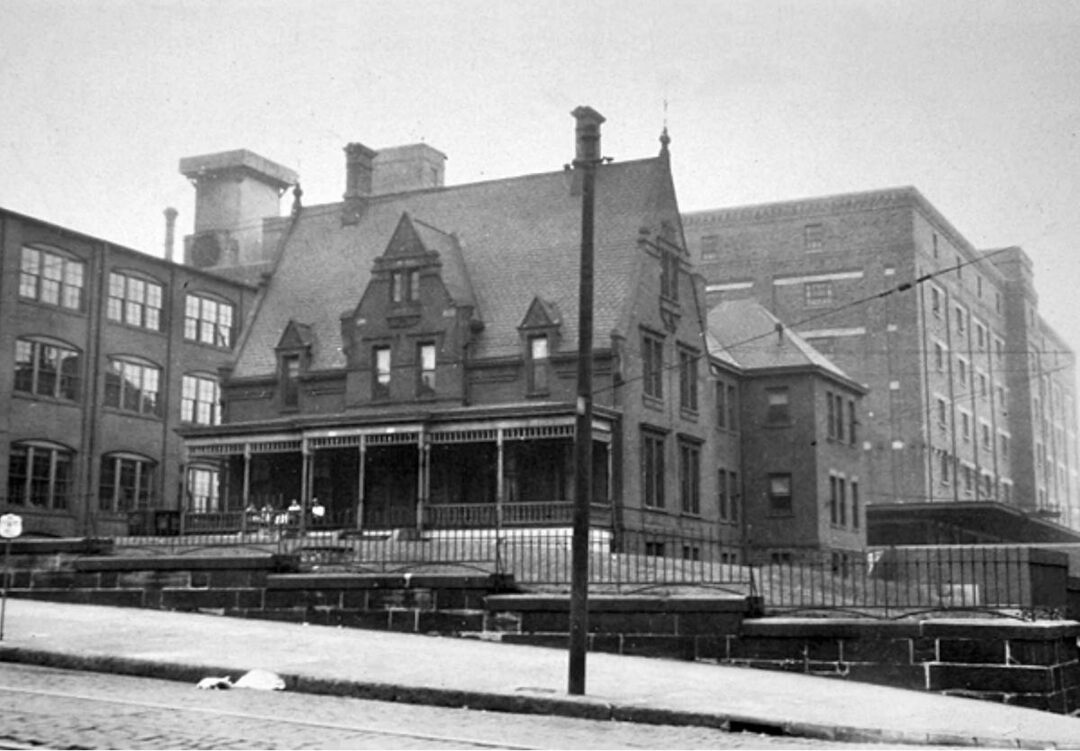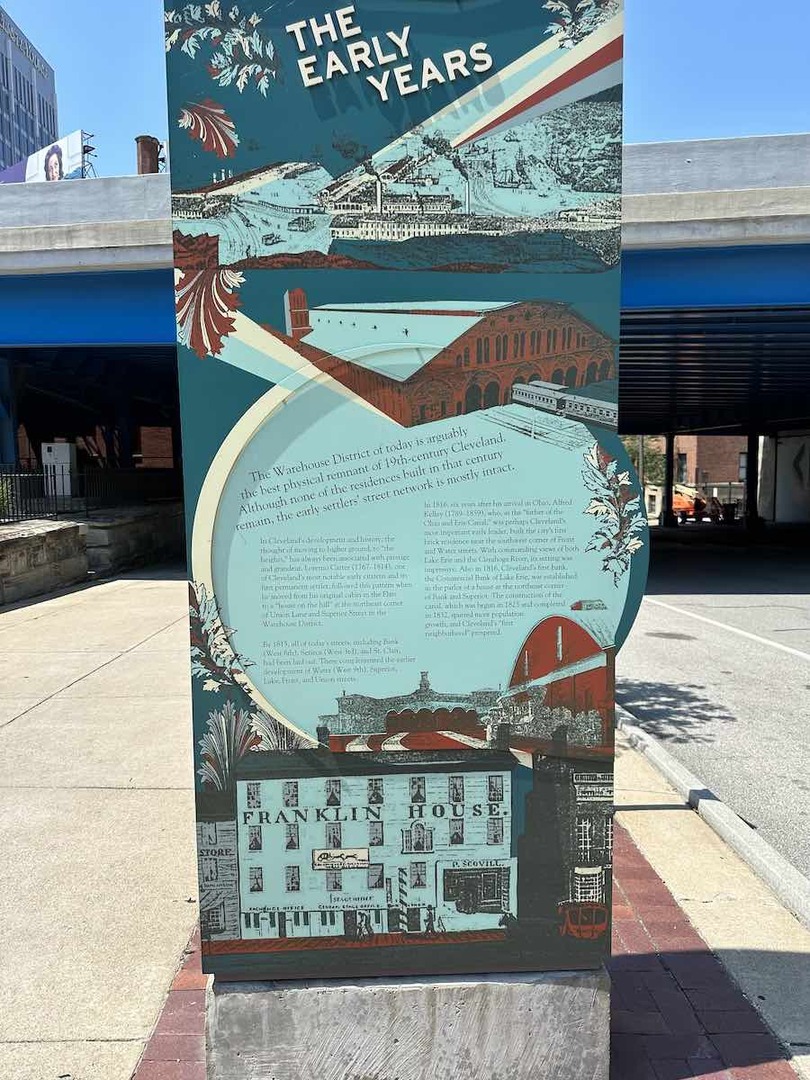
If the Cleveland Harbor Lighthouse continued shining to this day, its beam would illuminate much of the Flats, keep most residents of the Archer Apartments and Pinnacle Condominiums unhappily awake, and seriously endanger drivers crossing the Cleveland Memorial Shoreway bridge. That’s all moot, of course, since the lighthouse ended its service in the 1890s. All that remains are sections of a sandstone wall and steps at the southwest corner of West 9th Street and Main Avenue. It’s a cute little spit of land, appropriately named Lighthouse Park.
By the mid 1820s Cleveland was hopping. The city had just dug a new entrance to the Cuyahoga River—eliminating a complicated stretch of waterway that took the river as far west as Weddell Street (now West 54th Street). Increased lake/river traffic around downtown, combined with Cleveland’s rapid commercial growth, convinced city fathers of the need to create a formal “Lighthouse Service” and to fund the creation of a “light station.” They chose a site on a bluff at the north end of Water (now West 9th) Street which, at the time, more or less abutted the Lake Erie shoreline (much of the land north of the Shoreway bridge is fill). Noted architect Levi Johnson was hired to design and build the tower and adjoining lighthouse-keeper’s house, which were completed around 1830. About the same time, an east-west artery, appropriately called Lighthouse Street, was cut through just north of the lighthouse. That road was later renamed Main Street, thus explaining why we often refer to the structure above it as the Main Avenue Bridge.
In the 1830s the immediately surrounding neighborhood was still quite bucolic with small residences, grassy plots, and a few grand homes, including Levi Johnson’s Mansard-style home just south of the Lighthouse. Cleveland’s commercial center was a few short blocks to the south and east, lining Superior Street between the Cuyahoga River and Public Square. Within fifteen years of the lighthouse’s completion, three grand hotels—the American House (1837), the Franklin House (1845), and the Weddell House (1847)—would offer testament to the area’s increasing vigor. In 1852, Johnson, who also was a shipbuilder and real-estate entrepreneur, built his own hotel, the Johnson House, on Superior between Water and Bank (West 6th) streets.
Today, lighthouses exhibit a special charm that most large structures lack. The Cleveland Harbor lighthouse was no exception, although its mission was inarguably utilitarian. Built at a cost of $8,000, the hexagonal stone building stood 55 feet high and 150 feet above the level of the lake. Via 11 lamps and 14-inch reflectors, it produced a fixed white light that could be seen for 19 miles.
In 1872 the tower was rebuilt and the keeper’s house remodeled. The lighthouse lasted until 1894 when, following a fire, it was decommissioned. Shortly thereafter, a new 63-foot-high lighthouse was constructed on a breakwall just west of the harbor entrance and the original lighthouse was torn down. Parts of the tower were used to increase the size of the adjoining dwelling to 43 rooms—capable of housing four keepers and their families. That structure remained until around 1937 when the Main Avenue Bridge was built.
Today, the wall and steps are the focal point of Lighthouse Park, which also features built-in seating, bench swings, electrical hookups for device charging, and an interesting light-bar feature. There also are several colorful historic markers that, like the Cleveland Harbor Lighthouse in years past, provide an illuminating view of Cleveland.
Images








